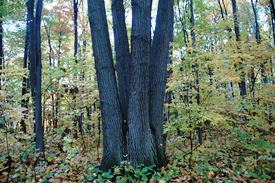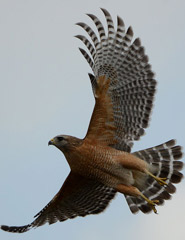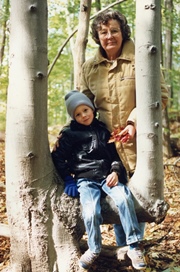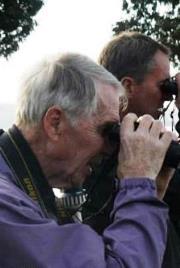The Toronto Carrying Place and the Happy Valley Forest

Four Oaks Corner, Happy Valley Forest, ON (Photo by Dr. Henry Barnett)
In my late thirties one day in the halls of the Toronto General Hospital, I was sought out and challenged by the great neurosurgeon Harry Botterell to accept the fact that if I was to be so dedicated and single-minded about neurology and busy in a challenging consulting practice with an added, almost consuming, interest in field and forest biology, including ornithology, that instead of giving all my spare time going to visit my family and to see them and their children, I should buy a place where they could come to visit me.
Harry said, “Henry, a country place for you is essential to dedicate yourself to neurology and at the same time to keep your family together.”
By luck I found a remarkable piece of the remaining Ontario primeval, hardwood forest (75 acres/30 hectares, scarcely touched by a saw in 100 years, but before that some pine and mature oak that was easy to reach had been cut). It was obtained for the ridiculously low price of $104 per acre in King Township, 25 miles north from the Lake and separated by the forest from 3 million people). We dubbed it the Happy Valley Forest.

Red-shouldered hawk taking flight (Photo by Wikimedia Commons, Gouldingken)
I built there and Harry was right! It was at the edge of the Oak Ridges Moraine, and the children and many grandchildren grew up there. It was at the end of an improved but unpaved concession road. Traffic was negligible and the road ended by a barrier placed just beyond my gate by the township. The township had agreed thereby to protect a nest of the red-shouldered hawk that came close to the edge of the concession road.
For this family it truly was a happy spot!
The entrance to my part of the forest was at the north end of the Toronto Carrying Place; the prehistoric portage between Lake Simcoe and Lake Ontario (45 kilometres long and tough!). The birch bark canoe is sufficiently light as to be easy to portage such distances and it also can ride over the rocks of the Long Sault rapids. However when loaded as in a “war canoe,” the canoes will scrape on sharp rocks and sink. The Carrying Place was designed to avoid the rapids on the St. Lawrence River and the ever hostile Iroquois.

Kathleen and Brian demonstrating sitting tree, Happy Valley Forest, ON (Photo by Dr. Henry Barnett)
Along this main trail passing through the Happy Valley Forest are several trees called by the kids "the sitting trees." They are composed of either sugar maples, red oak, white elm or beech that have grown about three feet tall, then turning at right angles and growing for another couple of feet before turning up, having formed the “seat.” From the end of this seat a mature tree continues to grow to its full height and dominates the surroundings reaching for the sky, marking the trail through what was once the wilderness of the Oak Ridges Moraine.
All of these were pointing in a north-south direction. Daughter Ann had her explanation for this phenomenon. When the trail went through untouched forest, the Neutrals (and likely the Algonquin) who were marking their trail through the dense uncut forest held a little tree down as a sapling, using a log over a two-foot length, from which the growing tree we believe escaped and grew normally to become a forest giant.
They were guide posts for a wilderness trail, part of the Toronto (called “Taranto” in early French writings) Carrying Place Trail; a romantic twist!
We subsequently discovered by means of Google that Trail Marker Trees have been written up in a book by Dennis Downes, an authority on the subject. Downes has illustrated several good “sitting specimens.”
Altogether the children located four sitting trees in this part of the forest. They are distinctive relics of a huge virgin forest marked and commemorated in this very unique manner. They are now probably 300 or more years old on my property (now NCC property) and clearly mark the area of the Toronto Carrying Place, which up till now had been less certainly known in this part.
This is the second in a series of monthly blog posts Dr. Barnett will be contributing to Land Lines in the next few months.


